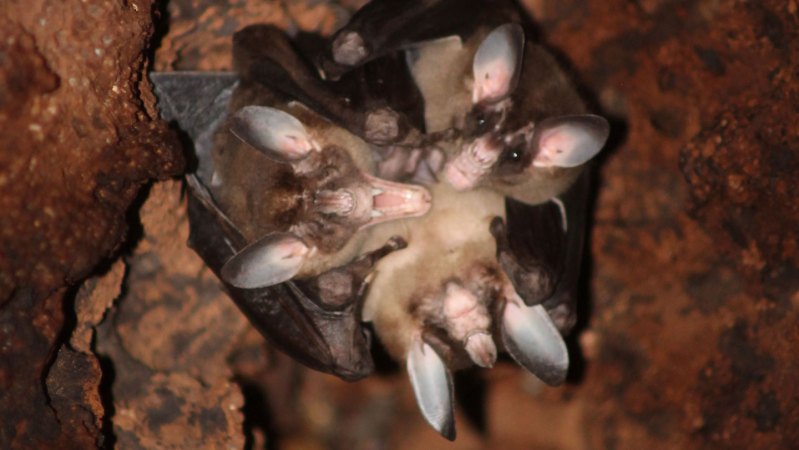Researchers in Costa Rica have observed that the world’s largest carnivorous bats exhibit remarkable social behaviors, including affectionate interactions and food sharing. Using advanced infrared cameras, scientists documented these bats engaging in cuddling and wrapping their wings around one another, highlighting their strong social bonds.
The study, conducted in the tropical regions of Costa Rica, sheds light on the complex social dynamics of these often-misunderstood creatures. The giant carnivorous bat, known scientifically as *Vampyrum spectrum*, has a wingspan that can reach up to 1 meter, making it a remarkable sight in the wild.
Significant Findings on Social Interactions
According to the research team, these bats demonstrate behaviors that are not only crucial for their survival but also play a significant role in maintaining their social structure. The infrared footage revealed that the bats frequently engage in wing-wrapping, a behavior that appears to be a form of affection and social bonding. In addition to cuddling, they were observed sharing prey, which is a rare behavior among carnivorous species.
The findings suggest that these social interactions may enhance cooperation among the bats, ultimately contributing to their survival in the wild. The sharing of food could also improve the overall health of the group by ensuring that all members receive adequate nutrition.
Implications for Conservation Efforts
Understanding the social behaviors of giant carnivorous bats is crucial for their conservation. As habitat loss and environmental changes threaten their populations, knowledge of their social structures can inform more effective conservation strategies. The research emphasizes the importance of preserving their natural habitats to support these intricate social networks.
Moreover, this study highlights the need for greater awareness of the ecological roles that bats play in maintaining healthy ecosystems. Bats are vital for controlling insect populations and pollinating plants, making their conservation critical not only for their species but for biodiversity as a whole.
The research team plans to continue monitoring the bats to further explore their social interactions and behaviors. By documenting these fascinating aspects of their lives, scientists hope to foster a greater appreciation for these remarkable creatures and the importance of their conservation.
In conclusion, the affectionate behaviors of giant carnivorous bats, as revealed by infrared cameras in Costa Rica, underscore the complexity of their social lives. As researchers delve deeper into the social dynamics of these bats, the findings could play a pivotal role in shaping conservation efforts and fostering a greater understanding of their ecological significance.







































































